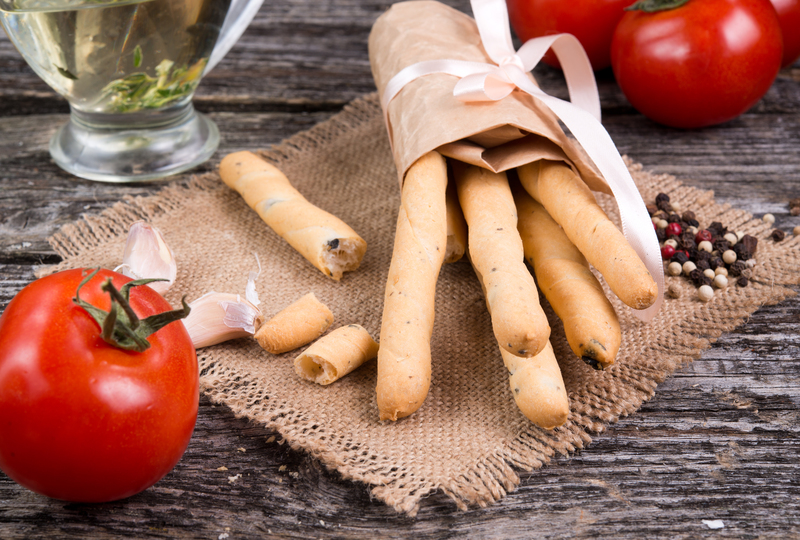Your Wellness Checklist: Plastics to Exclude from Use
Your health and environmental well-being are closely intertwined with the daily choices you make—especially regarding plastics. From food packaging and water bottles to personal care products and even household items, plastics permeate almost every aspect of our modern lives. However, not all plastics are created equal, and some are clearly more hazardous to your wellness than others.
Are you aware of which plastics to avoid for optimal health? This comprehensive checklist guides you through the various types of plastics you should minimize or entirely exclude from your routine, and provides insightful alternatives to help you embrace a healthier, plastic-free lifestyle.

Understanding the Risks: Why Certain Plastics Should Be Excluded
The convenience and versatility of plastics have made them indispensable, but many common plastics contain chemicals that can leach into food and beverages, accumulate in our bodies, and disrupt hormones. Some plastics also break down into microplastics that can damage ecosystems and even enter the human bloodstream.
- Exposure to hazardous chemicals: Many plastics contain bisphenol A (BPA), phthalates, or other endocrine-disrupting compounds.
- Environmental pollution: Hard-to-recycle plastics clutter our environment, harm wildlife, and persist for hundreds of years.
- Microplastics ingestion: As plastics degrade, they can enter our food chain, affecting both wildlife and human health.
Your wellness should start with awareness and responsible choices about the plastics you use daily.
The Wellness Checklist: Plastics to Exclude from Use
1. Polyvinyl Chloride (PVC) - Recycling Code #3
Polyvinyl chloride, or PVC, is commonly found in pipes, shower curtains, toys, packaging, and even some cling wraps. But this plastic often contains phthalates and lead to make it softer and more flexible, both of which are documented to disrupt hormones and elevate health risks--especially in children.
- Why exclude: Contains hormone disruptors and dangerous additives.
- Common items: Plumbing pipes, vinyl flooring, imitation leather, clear food packaging, children’s toys.
- Alternatives: Opt for glass, stainless steel, or certified BPA- and phthalate-free products.
2. Polystyrene (PS) - Recycling Code #6
Polystyrene is better known by its trade name, Styrofoam. It’s used widely in disposable coffee cups, take-out containers, meat trays, and packaging peanuts. When heated or used for hot food and drinks, polystyrene can release styrene, a potential carcinogen, into your food.
- Why exclude: Leaches styrene, especially when exposed to heat or oil; difficult to recycle and environmentally persistent.
- Common items: Coffee cups, disposable plates, foam packaging, take-out clamshells.
- Alternatives: Use biodegradable, compostable, or reusable containers made of bamboo, glass, or stainless steel.
3. Polycarbonate (Often Contains BPA) - Common in Code #7 “Other”
BPA has become a buzzword in wellness circles, and for good reason. Bisphenol A is found in many hard, clear plastic products, including water bottles, baby bottles, and food storage containers, often designated recycling code #7 or marked as polycarbonate.
- Why exclude: BPA is a powerful endocrine disruptor linked to developmental, reproductive, and neurological problems.
- Common items: Large water jugs, baby bottles, reusable water bottles, canned food linings, sports equipment.
- Alternatives: Choose glass or stainless steel; if plastic is necessary, ensure it’s clearly labeled “BPA-free”.
Secondary Checklist: Other Plastics to Minimize
Polyethylene Terephthalate (PET or PETE) - Recycling Code #1
While widely considered safer than plastics containing BPA or phthalates, PET can leach antimony, a toxic metalloid, especially if bottles sit in heat or sunlight for long periods.
- Why minimize: Potential for antimony and other chemical leaching increases with reuse.
- Common items: Single-use water bottles, soda bottles, food containers.
- Safe use tip: Use PET containers only for single use and avoid exposure to heat.
Low-Density Polyethylene (LDPE) - Recycling Code #4
LDPE is generally regarded as a safer plastic but is frequently used in single-use bags and food wraps that contribute to environmental pollution. Overuse perpetuates the single-use plastic economy.
- Why minimize: Difficult to recycle, environmental persistence, contributes to microplastics pollution.
- Common items: Grocery bags, bread bags, squeezable bottles, cling wrap.
- Alternatives: Switch to reusable fabric bags, beeswax wraps, and glass.
How to Identify Plastics to Exclude
Understanding plastic recycling codes is your best tool for reducing risky plastics. Flip over a container or bottle and look for a recycling symbol with a number inside it, ranging from 1 to 7. Here’s what you need to remember:
- Numbers to avoid: #3 (PVC), #6 (PS), #7 (unless specified as plant-based or BPA-free polycarbonate)
- Better options: #1 and #2 (‘PET‘ and ‘HDPE’) for limited, single-use applications only.
- Best: Stick to materials like glass, stainless steel, uncoated bamboo, and ceramic for repeated use.
Top Tips for Excluding Hazardous Plastics from Your Life
1. Never microwave food in plastic containers
Heating plastics releases chemicals faster. Use microwave-safe glass or ceramic instead for all reheating.
2. Simplify shopping habits
- Bring your own bags, containers, and cups when shopping or getting takeout.
- Select fresh or frozen produce over canned goods, which often use epoxy linings with BPA.
3. Transition to safe storage solutions
- Invest in glass jars, stainless steel containers, and natural fiber wraps for storing leftovers or packing lunches.
- Avoid wrapping fatty or acidic foods in plastic, as these substances draw out plasticizers more readily.
4. Choose certified toys and products for children
Children are especially sensitive to plasticizers and chemicals. Check for safety certifications to ensure toys are free from phthalates, BPA, lead, and other toxins.
The Environmental Connection: Wellness Beyond Your Body
Excluding harmful plastics doesn’t just protect your physical health—it’s a crucial step toward a healthier, less toxic planet. Many of the plastics on this checklist are either rarely recycled or degrade into harmful microplastics in the environment. By avoiding these plastics, you’re reducing pollution and protecting marine life, wildlife, and future generations.
- Support plastic-free businesses by choosing their products and encouraging your favorite stores to follow suit.
- Participate in recycling programs or community cleanups to bolster local environmental efforts.
Transitioning to a Plastic-Reduced Lifestyle: Practical Steps
Moving beyond plastics takes thought, planning, and persistence—but you’ll feel the benefits in your health, home, and community almost right away.
1. Audit your home
- Make a checklist of plastic items in your kitchen, bathroom, and pantry.
- Identify items that are marked with high-risk codes (#3, #6, #7) or that contact your food and drinks.
2. Replace systematically
- Start by replacing the highest-risk items like plastic water bottles, food containers, and utensils.
- Gradually swap out items each month to avoid overwhelming yourself or your budget.
3. Share and educate
- Encourage friends, family, and workplaces to reduce plastic reliance by sharing your wellness checklist.
- Advocate for plastic-free alternatives at your child’s school, local restaurants, and community events.
Frequently Asked Questions: Plastics to Exclude for Your Wellness
Which common plastics are considered safest?
High-density polyethylene (HDPE, code #2) and polypropylene (PP, code #5) are generally less likely to leach harmful chemicals. Even so, reducing all plastic use where possible is the best wellness policy.
How do I ensure a product is truly “BPA-free”?
Look for reputable certifications or buy directly from vendors specializing in non-toxic products. Be cautious of older products or those with recycling code #7 that do not explicitly state “BPA-free”.
What’s the best way to dispose of plastics to be excluded?
Whenever possible, avoid purchasing plastics that are difficult to recycle. Some hazardous plastics require special disposal due to additives. Contact your local waste authority for guidance.
Is it safe to reuse disposable plastic bottles?
No. Most single-use plastic bottles (especially PET, code #1) are not designed for reuse and can leach chemicals when exposed to heat or sunlight. Switch to reusable glass or stainless steel bottles.

Takeaway: Make Your Wellness Checklist Actionable
Your wellness and the planet’s future are in your hands. Armed with this checklist of plastics to exclude or minimize, you can take decisive steps toward a cleaner, healthier, and more sustainable life.
- Avoid plastics: Polyvinyl chloride (#3), polystyrene (#6), polycarbonate/BPA (#7), and others in direct contact with food and drink.
- Limit use: Single-use PET (#1) and LDPE (#4) plastics to ensure safe, infrequent use and proper disposal.
- Embrace alternatives: Glass, stainless steel, ceramic, bamboo, and other natural materials wherever feasible.
- Stay informed: Regularly update your knowledge on plastics as new research and safer alternatives become available.
Start today: Walk through your home with this plastic wellness checklist and commit to smarter, safer choices. Your body, your family, and the environment will thank you.
Resources for Going Plastic-Free and Protecting Wellness
- Environmental Working Group: Consumer Guides
- Plastic Pollution Coalition: Health and Plastics
- FDA: Bisphenol A (BPA) Information
- NIEHS: BPA and Human Health
Empower yourself with knowledge and practical action. Make your own personalized checklist for plastics to exclude and enjoy a healthier, greener future!